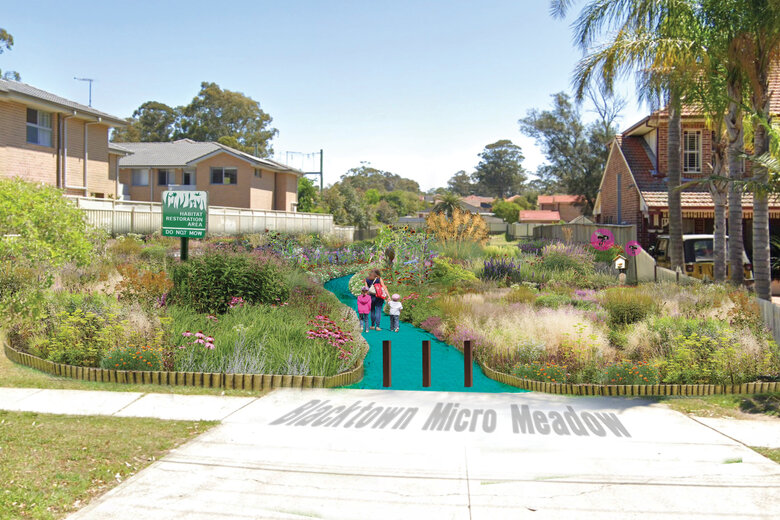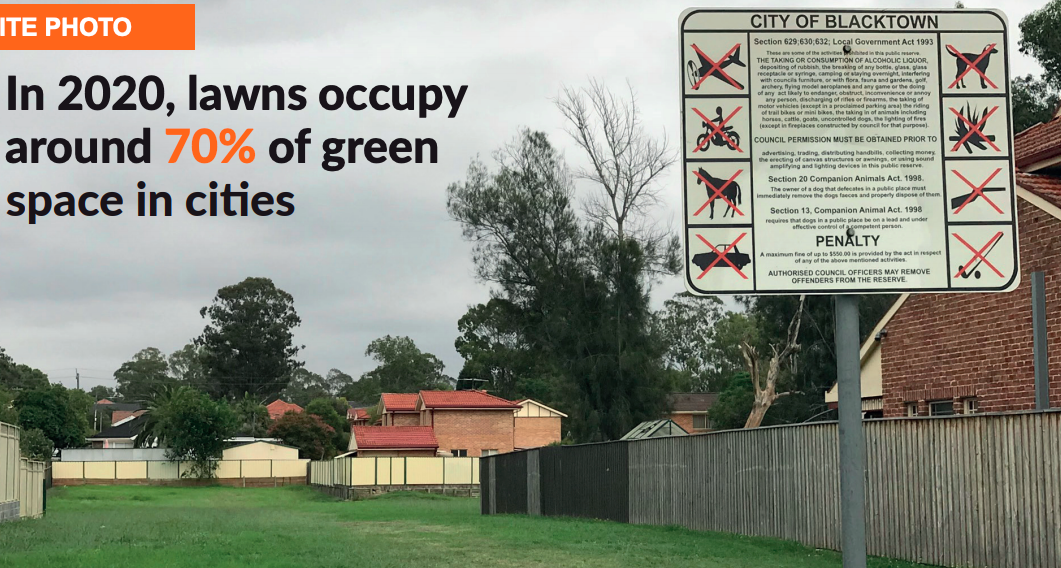
Transforming unloved and under-utilised pockets of neglected urban land into “micro meadows” can boost biodiversity and connect communities, a social planner says.

Sarah Reilly, the director of social planning and community building consultants Cred Consulting, says micro meadows are an urban twist on the ‘rewilding’ movement that’s taking off overseas.
“Across the world there’s a trend to increase biodiversity in urban areas, and micro meadows are emerging all across Europe,” Ms Reilly told Government News.
“It’s a really common thing in urban areas”.
Micro meadows offer a way of integrating more nature into urban public spaces, including what’s known as residual land – the empty lawns that proliferate around housing developments in many western Sydney local government areas.
Lawns make make up about 70 per cent of urban green space, Ms Reilly says.
Yet these spaces are costly to maintain and can’t be used for recreational facilities like playgrounds.
Reimagining public space
“Basically micro meadows are a reimagination, or reuse of public open space that you find throughout Sydney, and particularly in western Sydney,” Ms Reilly says.
“You’ll find a lot of small open space areas that are surrounded by houses and only have one open street frontage.
“They don’t feel safe and they don’t offer any social or environmental outcomes.”
The idea of the micro meadow is to transform these spaces a place where biodiversity can flourish and communities can come together and connect socially, she says.
Micro meadows not only reduce maintenance costs associated with mowing and watering, but they also act as water retainers and reduce emissions, with 1 square metre of micro-meadow equivalent to a five year old tree.
They also create happier and healthier communities, Ms Reilly says, and provide opportunities for community involvement and education.
Award winning idea
Cred’s plan to create an urban “micro meadow” at a site in western Sydney last month took out the Best Open Space idea a Public Space Ideas competition held by the Committee for Sydney.
Ms Reilly says the company was doing a social impact assessment of a redevelopment site in the Blacktown LGA when they came across a vacant site.
That site formed the basis of the case study the team submitted to the competition.

“There was a lot of social housing backing onto it and it was creating an unsafe environment,” Ms Reilly said.
“There was a sign that said basicially no games, no fires, no horses, no cars, no dogs, no planes, no guns, no bikes. We said what on earth is the point of this space?
“We thought about it and and the micro meadow idea just seemed like a good solution with great outcomes.”
The judges agreed.
“This idea looks to transform residual and underused open space into micro-meadows to connect to nature, protect threatened fauna and flora, beautify our neighbourhoods, and improve health, wellbeing, and safety for residents,” they said.
“As many Sydneysiders are living in increasingly dense neighbourhoods with limited access to quality open space or opportunities to connect with nature, the jury was in strong agreeance that is idea holds immense value for our communities.”
While the Blackown case study remain conceptual at this stage, Ms Reilly and her team are working with several councils around open space planning, including Fairfield and Randwick Council Open Space Strategy and Newcastle’s Social Infrastructure Strategy.
“We do a lot of engagement across western Sydney and one of the main things people ask for in terms of open space is more colour and more beauty,” she says.
Comment below to have your say on this story.
If you have a news story or tip-off, get in touch at editorial@governmentnews.com.au.
Sign up to the Government News newsletter
Wonderful idea…. and why not encourage people to create their own micro meadows on verges too!!